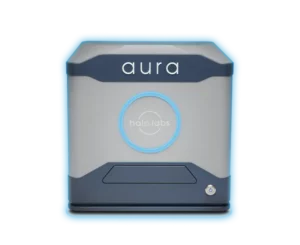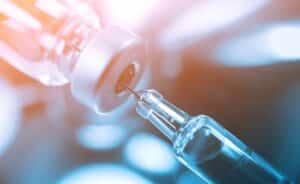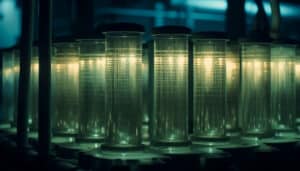Skip to content
Resources
- App Note 1: See What’s Really In Your Formulation With Backgrounded Membrane Imaging
- App Note 10: Detect Specific Protein Aggregates in Biologic Formulations with the Aura Immunoassay
- App Note 11: High-Throughput Detection of Degraded Polysorbate with FMM
- App Note 12: Detect, Identify, and Characterize Cellular versus Non-cellular Aggregates with the Aura CL
- App Note 13: Evaluate Cell Therapy Product Purity with Aura CL
- App Note 14: Identify and Characterize Particles in the Visible Size Range with Aura
- App Note 15: Accurate, High-Throughput Cell Viability and Purity Measurements with Aura CL
- App Note 16: Is Your AAV Payload Impacting Stability? Find out with Aura GT
- App Note 17: Identify Optimal Biologic Candidates: Low Volume, Early Stage Developability Assessment with Aura PTx
- App Note 18: Identify Stable Biologic Candidates During Cell Line Development With Aura PTx
- App Note 19: Analysis of Subvisible and Visible Aggregation in Lentiviral Vectors with Aura GT
- App Note 2: Accurate Subvisible Particle Analysis With 10x Less Sample
- App Note 20: Accurate Particles Characterization in Lipid Nanoparticle Therapies
- App Note 21: Subvisible Particles: Why Don’t I Just Filter My Biologic Samples?
- App Note 22: Detecting Glass Particles – Making the Invisible Visible to Avoid the Leading Cause of Drug Recalls
- App Note 3: A New Method for Measuring Particulates in Protein Drug Formulations with Complex Excipients
- App Note 4: Sized Right For Particle Analysis
- App Note 5: High Throughput Measurement of Compound Solubility and Physical Form with BMI
- App Note 6: Are You Missing the Bigger Picture with Your AAV Analytics?
- App Note 7: Protein Aggregate Identification with FMM: Rapidly Distinguish Protein from Non-Protein Particles in Biologic Formulations
- App Note 8: AAV Aggregate Quantitation and Identification with the Aura System
- App Note 9: USP Compendial Particle Measurements with the Aura System
- Aura (Standard) Specification Sheet
- Aura BMI Specifications Sheet
- Aura CL Specification Sheet
- Aura Family Brochure
- Aura GT Specification Sheet
- Aura Membrane Specification Sheet
- Aura PTx Specification Sheet
- Aura: Particle And Aggregate Quantification, Characterization, ID, And Full USP Testing
- Aura+ Specification Sheet
- Background Membrane Imaging Brochure
- BioPharm – Unlocking Protein Therapeutics Potential: Aura PTx for Advanced Stability Studies
- Biopharm Intl Webinar – Are You Seeing The Whole Picture?
- BITC 2021 Symposium: High Throughput Low Volume Subvisible Particle Particle Sizing and ID for All Biologics
- BMI Count And Size Validation With Aura
- Case Study: Relying on Light Obscuration is Highly Risky
- Cell Line Development: Identifying Stable Biologic Candidates
- Characterization of Protein Aggregates and Extrinsic Particles from Cell Line Development Through Release
- Characterize and Identify Subvisible Protein and Polysorbate Aggregates in Protein Therapeutics
- Characterizing the Stability of Gene Therapy Products at Ultra Low Volume
- Complete Characterization of Subvisible Aggregates and Impurities in Protein, Gene, and Cell Therapies Using Aura+
- Determination of contaminating particles in cell therapy products; a proof of principle study
- Don’t Let Aggregation Lead to Ruination: Early Detection Saves Lives
- DTR – Complete Aggregate and Particle Characterization of Protein, Gene, and Cell Therapies
- DTR Webinar – New Horizons in Small Molecule Solubility Screening – November 2019
- Efficient Particle Analysis eBook
- Ensuring High Purity Cell Therapy Products: A Focus on Accurately Characterizing Cell Aggregates, Residual Dynabeads, and Other Product Impurities
- Ensuring Safety to Achieve Rapid Release with Aura
- Finding the Needle in a Haystack: Rapid Assays to Detect Degraded Polysorbate and Other Problems Lurking in your Formulation
- From Cell Line to Final Formulation: Characterizing mAb Stability Throughout the Development Pathway
- GEN – An Automated Imaging Strategy for Characterizing Particles in Biotherapeutic Stability Studies
- GEN – An Automated, High-Throughput Approach for Stability Testing in Protein, Cell, and Gene Therapeutics
- GEN – Protein Therapeutics: An Automated Imaging Strategy for Elucidating Protein Stability
- GEN – Ultra-Low Volume Biophysical Characterization for Viral Vectors and LNPs
- GEN Webinar – For Cell and Gene Therapy Products, Early Characterization is Critical
- GEN Webinar – High Throughput Low Volume Subvisible Analysis – February 2018
- Gene Therapy: Critical Quality Attributes of Viral Vector and Lipid Nanoparticle Stability
- Halo U: FMM 201 and SMI 301: Subvisible Particle Identification using Side-Illumination and Fluorescence Membrane Microscopy on Protein Therapeutic Formulations
- Halo U: Intro To Aura And BMI 101
- Halo University USP788: Validating your Aura for US Pharmacopeia (USP) Sub-visible Particle Analysis
- Halo University: AUR102 Why upgrading to Aura can help with your SVP analysis
- Halo University: Intro to BMI 101: How it’s Used in Protein, Cell, and Gene Therapeutics
- High Throughput Characterization Of Antibody, AAV And Cell Therapy Aggregates And Particulate Impurities Using The Aura
- High Throughput, Low Volume Product Stability and Purity Analysis for AAV and Lentiviral Gene Therapies
- High Throughput, Low volume Product Stability and Purity Analysis for Gene and Cell Therapies with Aura+
- Identification of Stable Cell and Gene Therapeutics and Characterization of Subvisible Aggregates
- Introducing Aura CL™ for Cell Therapy Aggregation, Purity, Particle Analysis and ID
- Introducing Aura CL™ for Cell Therapy Physical Stability, Aggregation, and Particle Identification
- Introducing the Aura CL: Subvisible Particle Detection for Cell and Gene Therapy
- Is that a Live Cell or Cell Debris? Cell Viability Meets Product Purity
- ISCT – Particulates in Cell & Gene Therapy Products: A Survey and a Solution
- Optimizing AAV Vectors for Gene Therapy Delivery
- Particle Vue 21 CFR Part 11 Documentation
- Protein Or Not? Advanced Aggregate and Particle Analysis with Aura
- Protein or Not? Polysorbate or Not? Advanced Particle Characterization with Fluorescent ID
- Seeking The Unseen: Sub-visible Particle Analysis As A Core Analytical Technique
- Select Science – Characterization of Protein and Polysorbate Aggregation in Protein Therapeutics
- Subvisible Particle ID In Cell And Gene Therapy With The Aura CL
- Tech Note 1: USP Particle Count Standards with Aura and Particle Vue
- Tech Note 2: Using BMI for High Protein and Excipient Concentration Particle Analysis
- Tech Note 3: Introducing Halo Labs’ Cell Map Reduction Algorithm
- Tech Note 4: Residual Dynabeads Detection with Aura
- Tech Note 5: SIMI: A Different Approach to Revealing Dangerous Subvisible Impurities
- Virtual Seminar – AAV Vector Stability With BMI – Are Your Analytics Giving You The Whole Picture? – April 2020





